Colorful houseplants are an inexpensive way to brighten up your home and add color to your home and office. They also provide oxygen and humidity to your home, making them perfect for those who suffer from allergies.
There are hundreds of houseplant varieties out there, each with their own unique characteristics. When thinking of plant colors, you probably imagine lush tints of green leaves, but colorful houseplants have many more colors.
There are indoor plants with colorful leaves with shades of yellow, pink, red, orange, and purple to liven up the decor.
In this article, I share my favorite colorful houseplants to grow in your home.
1. African Violet
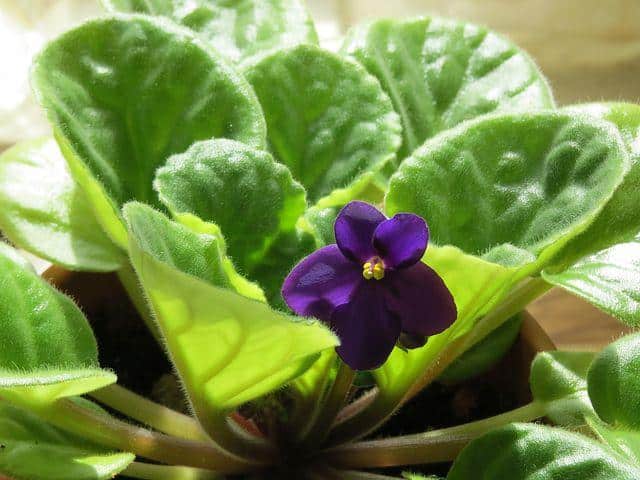
The African violet or Saintpaulia is well known and popular plant. It is characterized by its delicate purple flowers and its velvety leaves. This favorite houseplant’s bloom also comes in a colorful variety of brilliant shades of pink, blue, or white.
A few African Violet cultivars also feature flowers that are ruffled or fringed. Still others will offer variegated foliage, so there are a lot to choose from.
As brightly-colored, low growing plants in terms of height, they are ideal for shelves or small spaces. Your African Violet can have elegant blooms several times a year when treated to bright, indirect light.
They also prefer a schedule of regular watering for healthy growth. As they spread in diameter when growing, you may find your specimen grows to about the size of your dinner plates, making it a lovely table centerpiece.
Read more about growing and caring for the african violet.
2. Anthurium
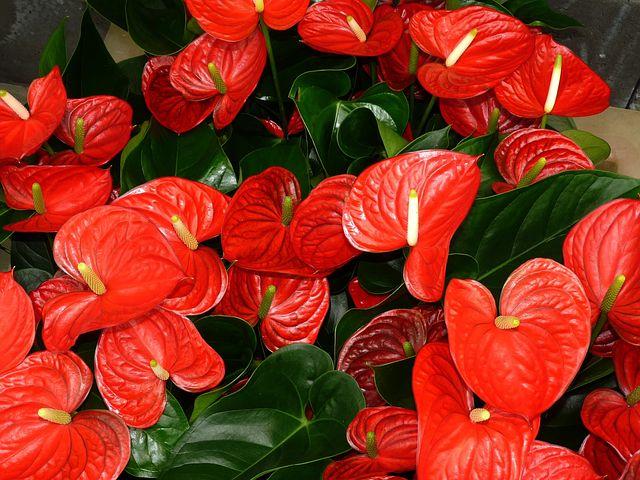
If you love pink, salmon, and red colors, then Anthurium blooms will be an obvious choice and these flowers are quite long-lasting.
Large, glossy, heart-shaped leaves are characteristic of this tropical perennial. In fact, these plants are native to the tropical forests of Central and South America, along with the Caribbean.
As epiphytes or “air plants’,’ you’ll find them growing on a host tree or a host plant in their natural habitat. However, anthuriums do not harm their hosts, as they are not parasitic. They simply need a place to roost for support and gather nutrients and moisture from the air.
This plant will require little care, meaning beginners should try one to start with. They are also a good choice for those who have little time to dedicate to plant care, but would like some color in the home or office.
A happy plant can produce vividly colored anthurium flowers all year round with their bright blooms.
Read more about growing anthurium houseplants.
3. Bird of Paradise
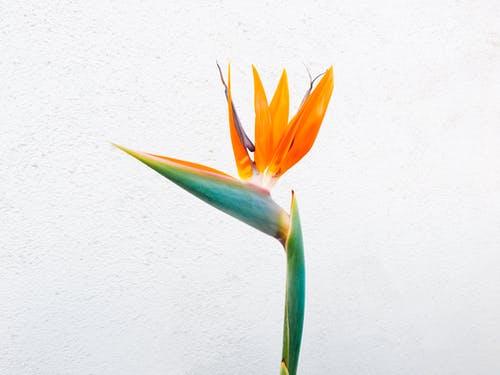
Another exceptionally colorful tropical plant is the Bird of Paradise, a member of the Strelitzia genus, it is botanically named Strelitzia reginae.
A South African native, this is a houseplant that grows to be quite tall and produces flowers that are beak-shaped, like those of a bird. Blooms appear in yellow, orange, and blue, while their long green stems are filled with lush foliage.
The Bird of Paradise loves direct sunlight during the colder seasons or if you live in a colder climate. For warmer climates, or during hotter summer seasons, indirect sunlight is best.
Regular watering will be necessary when the top inch of the soil bed is dry to your touch, so stick that finger in to verify when your plant needs water.
Read more about the Variety of Bird of Paradise Plants.
4. Bromeliad
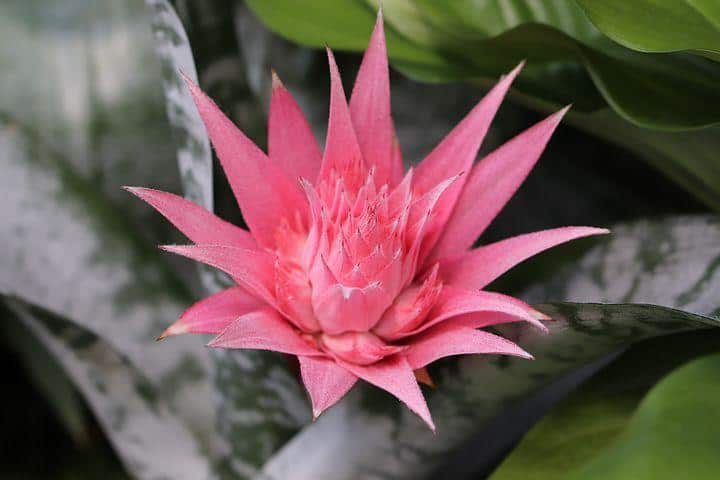
This is an exotic-looking houseplant with absolutely ravishing blooms. “Bromeliad” actually refers to thousands of varied plant species, all members of the Bromeliaceae family.
This plant is a diva among houseplants primarily thanks to its beauty. Yet despite its reputation for being a diva, this plant readily adapts to indoor locations.
A relative of the pineapple, bromeliads come in a wide variety of colors and textures. Bromeliad flowers tend to be large and are quite showy. The attractive foliage is characterized by long, colored leaves in green, red, yellow, orange, and sometimes purple with patterns that can include spots and stripes.
As drought-tolerant houseplants, they do prefer temperatures that range from 55° to 80°F. An interesting fact is how they can be watered. To water, you can keep the center cup of the bromeliad plant filled, or water it as you would any other houseplant into the soil.
Read more about how to care for the bromeliad houseplant.
5. Christmas Cactus
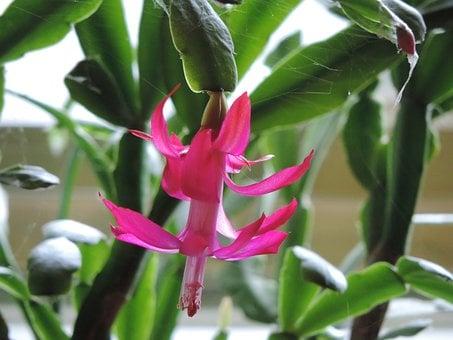
That’s right…a cactus at Christmas! These cacti are part of the Schlumberger genus. They feature exotic flowers in all sorts of colors, including pinks, purples, reds, white, and yellow.
As a low-maintenance houseplant, it will look very nice when positioned on a desk, table, or hanging basket as the cheerful blooms bend downward.
It needs indirect sunlight during its growing season and will only need a drink when the top inch of the soil bed dries out.
These bright beauties are among the longest-living houseplants when provided with a minimal amount of care and attention. It is low maintenance and will ask very little, while rewarding you with colorful blossoms.
6. Coleus Plant
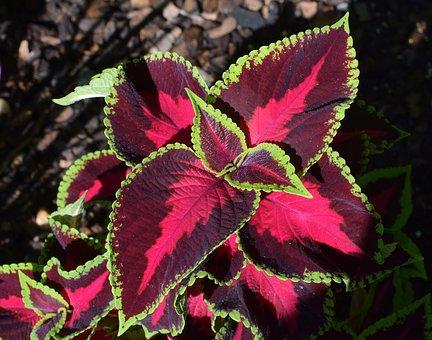
Usually seen as a ground covering plant that’s as an annual, the Coleus scutellarioides is also a beautiful, richly colored houseplant. It grows into deeply hued colors and interesting patterns.
This is an eye-catcher that will definitely spark interest with its dramatic foliage when placed in any room. As a tropical evergreen, it is considered to be low maintenance.
One great factor is that it can thrive in a variety of indirect lighting conditions that include very bright to low light. A nice moist soil bed will make for a happy plant, but not in waterlogged or soggy soil.
The Coleus plant is available in lots of bold colors, such as bright pink, red, burgundy, salmon pink, ivory, chartreuse, apricot orange, yellow, and even velvety black. You find some varying shades of green in the mix. Whatever color you love, there is a striking Coleus plant for you.
7. Croton Plant
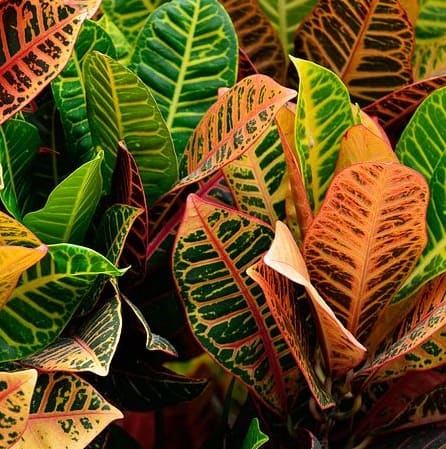
Codiaeum variegatum, popularly known as the Croton plant, is a member of the Euphorbiaceae family and is one of my absolutely favorite plants thanks to its array of bright colors.
Its variegated leaves come in multiple shapes, making for an interesting visual display. The common colors are red, yellow, and intense green magnifying its tropical beauty.
A few croton varieties will have pink and purple leaves, too. This is not the easiest plant to cultivate indoors. Crotons do not like to be moved, and they don’t like change.
Crotons do like plenty of humidity and warmth. They also prefer dappled indirect light, although it can manage with limited direct light. Keep the soil moist, as the croton enjoys a bit of water.
Your first challenge when raising a croton will be your home’s indoor temperature. If the temperature is too cold, this plant will begin to drop leaves. With proper care, you’ll be rewarded with lots of color. It can grow rather large to six feet tall and five feet wide, so plan on giving it plenty of space
Read more about how to care for the croton plant.
8. Cyclamen
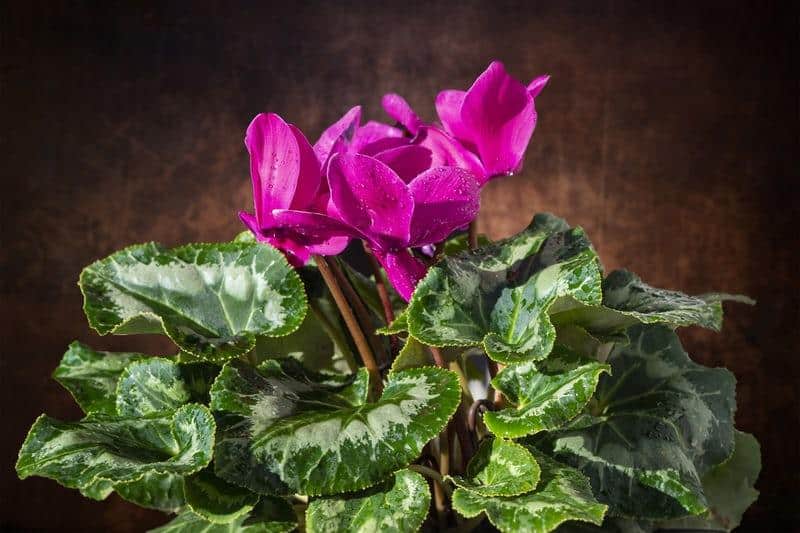
A member of the Primulaceae family, this native of the Mediterranean known as the cyclamen persicum, is a generous and lovely flowering plant.
While it is principally grown as a houseplant, in Mediterranean countries it is often seen decorating outdoor flower beds and balconies. A popular gift during the holidays, you may even receive one at Christmas.
A perennial, the cyclamen has thick fleshy roots called tubers that will go into dormancy in the summer. When autumn rolls around, the plant awakens and begins to regenerate itself.
Blooms come in varying shades of white, purple, pink, and red and point upwards. Its stunning foliage can be medium to large-sized. The green foliage are heart-shaped with silver marbling.
Their blooming period is pretty long, so you will most likely see the blooms already opening when you purchase. Cyclamens can be found in many sizes, from small, petite versions to large, fuller plants. Water your cyclamen when the soil bed feels dry and avoid wetting leaves to prevent mold.
Learn more about caring for cyclamen plants.
9. Gerbera Daisy
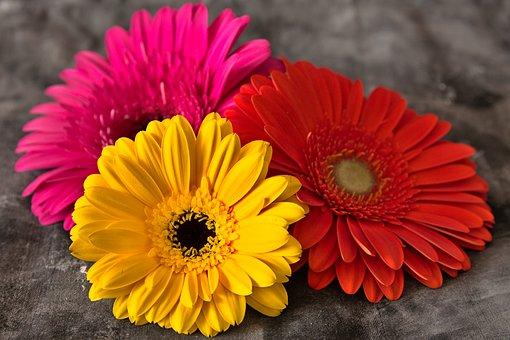
When you think of a daisy, it’s probably the Gerbera Daisy you have in mind. Have you ever received a flower bouquet with large colorful daisies included? It was most likely the Gerbera daisy in its cut version.
I actually have three potted Gerbera daisies with two sitting in a partially shaded windowsill, adding lots of color to my kitchen window. Best described as happy flowers, they can be found in bright yellow, orange, red, pink, or just about any color you can imagine.
Since they can grow to 18 inches in height, they look stunning as table plants, or as previously stated, on windowsills.
They do require a few hours of direct sunlight daily but can thrive in cooler temperatures. Watering is simple, just wait till the top inch of the soil bed dries out.
10. Kalanchoe Plant
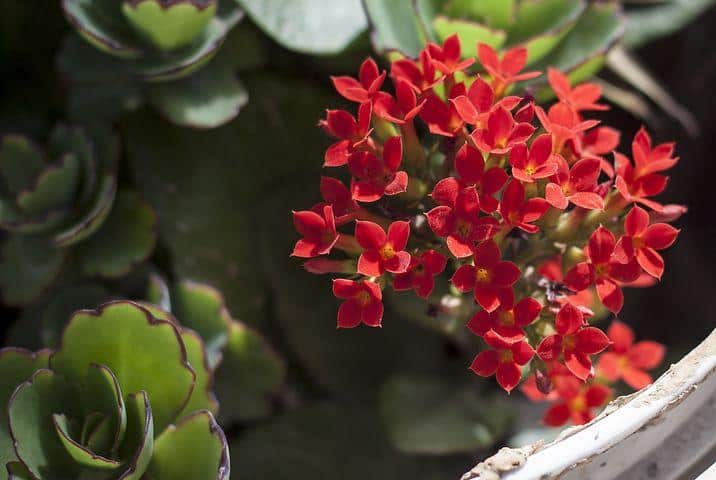
The Kalanchoe is a popular houseplant and seen in many succulent gardens. You may have seen these sold at your local supermarket.
This Madagascar native is characterized by its small pink, red, purple, yellow, orange, or white flowers. Its genus includes over one hundred plant species in the family. A Crassulaceae family member, it is botanically known as the Kalanchoe blossfeldiana.
The kalanchoe houseplant can and will thrive in dry climates because it is a succulent. These plants are extremely popular for the home because they are so incredibly easy to care for. Should you forget to water, don’t worry, because the kalanchoe prefers its soil to dry out between waterings.
Flowers will bloom all year if they have adequate exposure to bright sunlight. While bright light is a must, take care not to scorch the fleshy succulent leaves with too harsh or too much direct sunlight.
Learn more about growing kalanchoe plants.
11. Nerve Plant
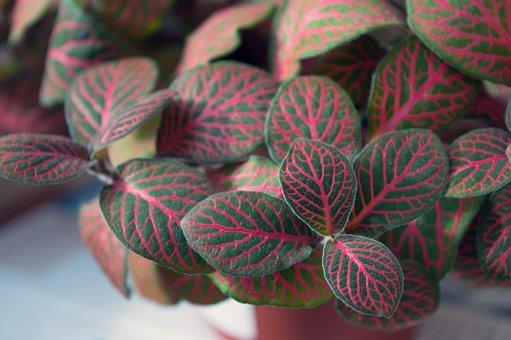
The Fittonia or Nerve Plant, is popular thanks to its eye-catching color on its gorgeous foliage. You’ll find leaves in light or dark greens with colorful veins in red, pink, or sometimes in white.
The nerve plant with pink and green leaves is the most common variety that are grown as houseplants indoors.
Nerve plants are often seen in indoor terrariums due to their need for humidity. This exotic beauty thrives in bright to low indirect sunlight, making it adaptable to a number of locations in the home.
Soil beds should remain a bit moist. Because the nerve plant loves humidity, it will do exceptionally well if you have a space humidifier, or you can also mist regularly to meet humidity needs. A bathroom or a kitchen where humidity tends to be higher are also ideal locations.
If you do not have a space humidifier or cannot mist regularly, consider using a pebble tray with water placed underneath the plant container. Also, grouping plants together will help humidity-loving plants thrive.
Read more about how to care for nerve plants.
12. Orchid
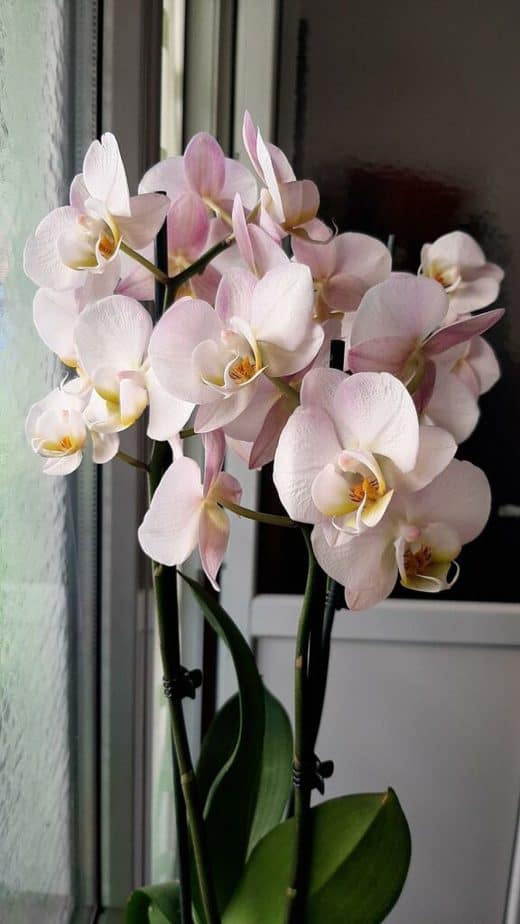
Orchids offer the most beautiful of blossoms and will bring understated elegance to any décor in any location. Members of the Orchidaceae family, orchids have a reputation for being quite difficult to cultivate.
Often described as finicky or capricious, the orchid plant itself may not actually be the problem. It’s more likely the plant owners are at fault because they are overly concerned with the plant’s welfare.
Blooms are epiphytes and will appear in a variety of sizes and places. Colors range from white to delicate pink, to striking black. Each orchid species will vary in its care requirements, so inform yourself about the specific kind of orchid that you are selecting.
Get information for the orchid’s light and water needs. Some varieties of these plants emit a lovely fragrance to accompany their elegant demeanor.
13. Polka Dot Plant
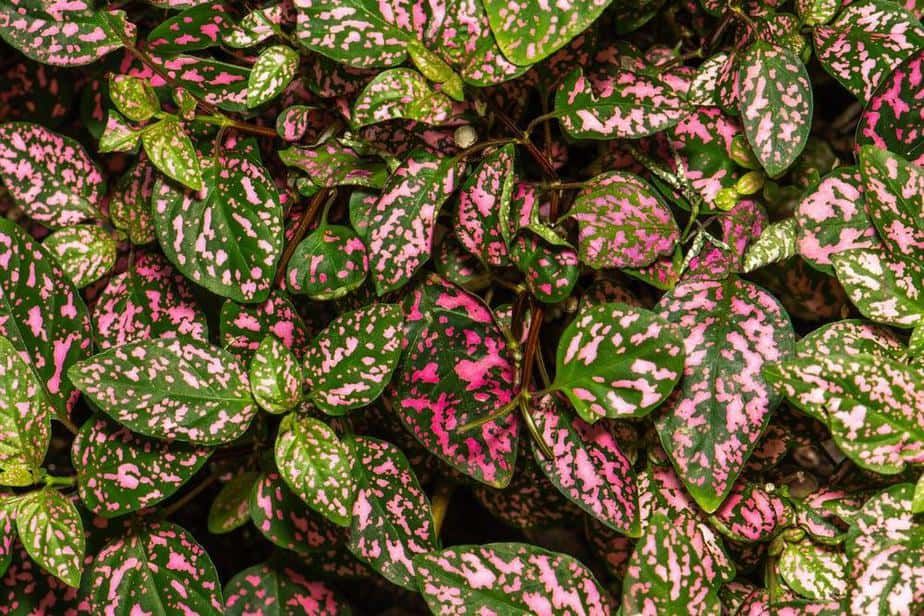
The herbaceous perennial Hypoestes phyllostachya, is commonly called the Polka Dot plant. A member of the Acanthaceae family, the polka dot has spotted leaves, making it a lively addition to any room in the home.
The most popular or well-known version may be this plant featuring pink leaves with bright green spots. It does, however, also come in versions with white, red, or purple spots and beautiful patterns.
An easy plant to grow and take care of, they do very well as houseplants and when grown indoors they remain smallish. Regular misting and evenly moist soil are basically all this plant asks of its owners.
Springtime is the perfect moment for growing one, and they are a fast-growing plant, so you’ll be gratified almost immediately when selecting this plant.
It also has a number of fun names including the measles plant, the pink dot plant, the flamingo plant, and the freckle face plant.
Read about how easy it is to care for the polka dot plant.
14. Ti Plant
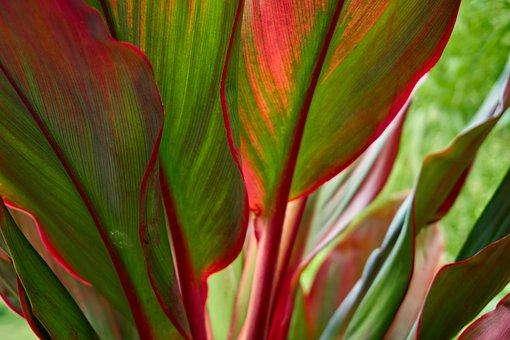
A Southeast Asia native, the Cordyline fruticose or Ti plant, is an evergreen plant related to that lovely and tasty vegetable known as asparagus.
Commonly grown in New Zealand, Hawaii, Polynesia, and tropical or subtropical climates, as an outdoor plant it grows into a small tree reaching a height of about ten feet. Indoors, it probably will not grow taller that six feet and is more often found in the three to six foot range.
Many cultivars of this plant exist, so foliage shape will vary and colors are likely to be variegated. Many color combinations are available, and you will most likely find plants that have orange, red, pink, burgundy, and green in the mix.
To maintain beautiful foliage with spectacular colors, bright indirect sunlight is a must. Soil needs to be kept evenly moist during the growing season. The Ti Plant loves humidity, so misting your Ti is helpful.
Learn more in the in-depth Hawaiian Ti Plant Care Guide.
15. Wandering Jew Plant or Spiderwort
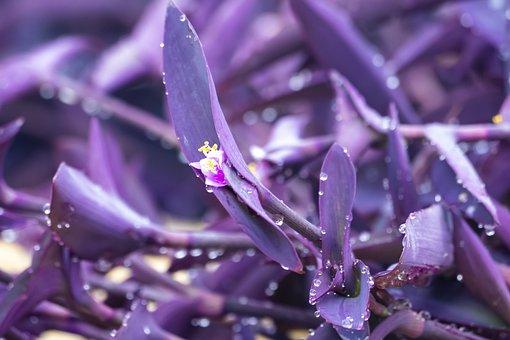
The Wandering Jew Plant is also known as a Spiderwort is in the Tradescantia genus that boasts lots of varieties.
The Wandering Jew is a common houseplant and cultivated both indoors and outdoors as ornamental plants. Plant parents love to grow them for the pop of color they bring to their homes and offices.
This beautiful houseplant requires little care, making it a great choice for home cultivation. It needs an evenly moist soil bed to grow its colorful leaves.
Available with solid green, solid rich purple, or varied stripes leaves, these plants are perfect in a hanging pot thanks to downward cascading vines with generous foliage. You can also place them on a shelf, a plant stand, a tall plant container, or on a table as long as they can trail downwards.
Bright natural light exposure is best, but it should be indirect light. Trailing vines should be pinched back frequently to prevent them from becoming leggy and to maintain a fuller, bushier appearance.
Learn how to care for the Wandering Jew Plant.
Colorful Houseplants Final Thoughts
Here is my favorites list of the most colorful houseplants that require varying levels of care and different environmental conditions.
A brightly colored houseplant can add lovely details to any home, regardless of the interior decorating style used. Positioned on a shelf, a table, or a windowsill, and depending on your choice of plant, you can add a focal point to the room.
What’s more, is that many of these plants are perennials and will flourish and continue blooming for years when properly cared for.
Hopefully, you will find the perfect colorful houseplant to brighten up your home with lovely vivid color.
For more lists of houseplants, check out these other articles:
Colorful Houseplants FAQs
What are the most colorful indoor plants?
All the plants on the Most Colorful Houseplants list are full of color, but the Polka Dot Plant, Coleus, Croton, and Nerve Plants definitely stand out for their colorful foliage. Their beautiful leaves will bring splashes of colors to your rooms.
What colorful plants grow in the shade?
While most houseplants prefer indirect sunlight, colorful houseplants that grow well in the shade include the Croton, White Orchid, Kalanchoe, Coleus, and Wandering Jew Plants.
What colorful plants are low maintenance?
The best low-maintenance, colorful plants include the Bromeliad, Kalanchoe, Christmas Cactus, Wandering Jew, and Anthurium Plants. These colorful houseplants require little care from their owners and make excellent plant choices.

